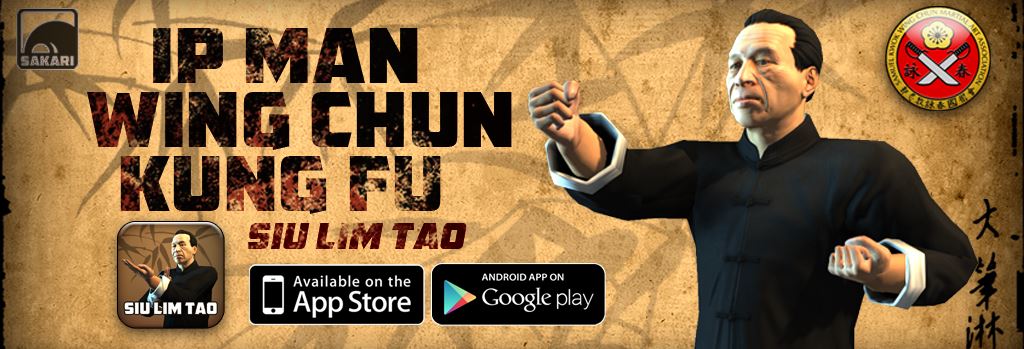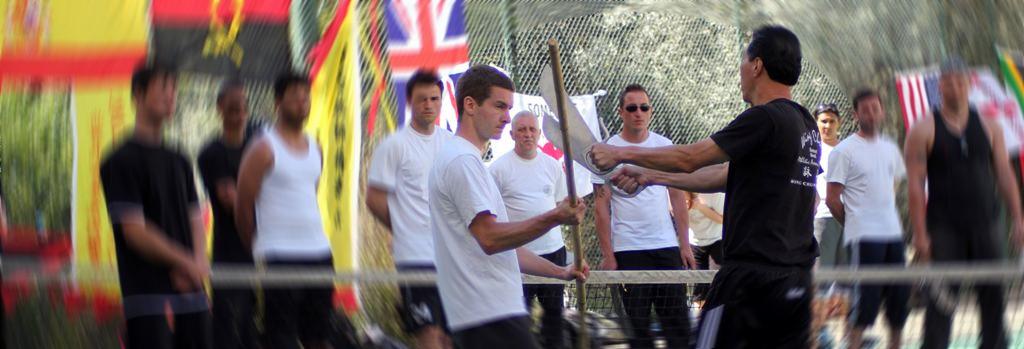The Wing Chun Kick
Article by Dan Knight added on 1 Aug 2012. Last updated on 1 Aug 2012.
Some thoughts on the Wing Chun kick
If a student came to me and had to learn to fight very quickly the first thing I would teach would be the basic Wing Chun front kick. Why? Because its easy to learn, safe to perform and effective at both attacking and defending. Just because Wing Chun Kung Fu does not have many kicks does not mean kicking should be overlooked. In the next few paragraphs I am going to talk about a few of the different kicks in Wing Chun and how they can be used.
The Front Kick
 The most basic kick in Wing Chun and one of the most effective. It can come from the front leg or the back leg when in a fighting stance (Biu Ma, like in Chum Kiu). Kicking off the front leg is very fast but not as powerful as kicking off the back leg which is itself slightly slower. The difference is like the difference between a straight punch and a turning punch (one is faster the other is more powerful). They are the same kick but can be used for different purposes depending on what is most important at the time (quicker time to target or more power). The front kick tends to aim for the knee, crotch, shin or ankle. The front kick strikes with the heel of the foot. Like a punch the kick should not be chambered. The heel (though not the knee) should move in a straight line to the target as its the fastest rout. The kick can be used to stop someone attacking you with a punch or take down as seen in UFC when Brando Vera prevents a take down with a front kick seen on the right.
The most basic kick in Wing Chun and one of the most effective. It can come from the front leg or the back leg when in a fighting stance (Biu Ma, like in Chum Kiu). Kicking off the front leg is very fast but not as powerful as kicking off the back leg which is itself slightly slower. The difference is like the difference between a straight punch and a turning punch (one is faster the other is more powerful). They are the same kick but can be used for different purposes depending on what is most important at the time (quicker time to target or more power). The front kick tends to aim for the knee, crotch, shin or ankle. The front kick strikes with the heel of the foot. Like a punch the kick should not be chambered. The heel (though not the knee) should move in a straight line to the target as its the fastest rout. The kick can be used to stop someone attacking you with a punch or take down as seen in UFC when Brando Vera prevents a take down with a front kick seen on the right.
The Front kick can also be used to attack a stationary target as a distraction while gaining control of the hands an hitting. A common combination is a front kick to double Pak Sau (to take both guard hands) and punch. The front kick can also be used to counter-attack after defending a punch. It will commonly be used to kick out the side of the knee, which is intended to destroy the knee joint to help take control of the fight.
The Side Kick
The side kick attacks the same areas as the front kick, namely the knee, shin, groin or ankle. It also uses the heel of the foot, (or in some schools the knife edge of the foot). The side kick is found in the dummy form. In application it is often used after a front kick if the opponent tries to step round towards the back of the Wing Chun practitioner. It can also be used to kick the opponents other leg after using a front kick.
Some important things to note about the side kick is that firstly it has the longest reach of any Wing Chun kick (or punch), this can be handy at keeping people at bay. However due to the fact it the kick involves turning the hips it should not be used as an entry technique as it can be side stepped leaving the practitioner open to counter-attacks.
Other kicks

Wing Chun has a few other kicks, most of these are a variation of the side kick or front kick. The Tan Kick or lifting Kick done by Ip Chun in Chum Kiu is a little different and it is used to defend. There is also a sweep in the dummy form combined with a double Lap Sau which can be used to trip opponents. The Bong Kick is another defensive kick that is often not taught. The Bong Kick used to be trained on Moi Fa Joig (3 posts stuck in the ground to form a triangle). However when Ip Man moved to Hong Kong from China it became impractical to find somewhere to put posts in the ground. This kick is almost certainly the hardest to perform as it requires both good timing and good positioning. Grandmaster Kwok is one of the few people who can actually use this kick to defend a kick and counter kick in one leg movement. The complex nature of this kick may be another reason why it has been all but dropped from most Wing Chun syllabuses.
Tags for this article:
KickingKicksMMAFront KickSide KickBong Kick



